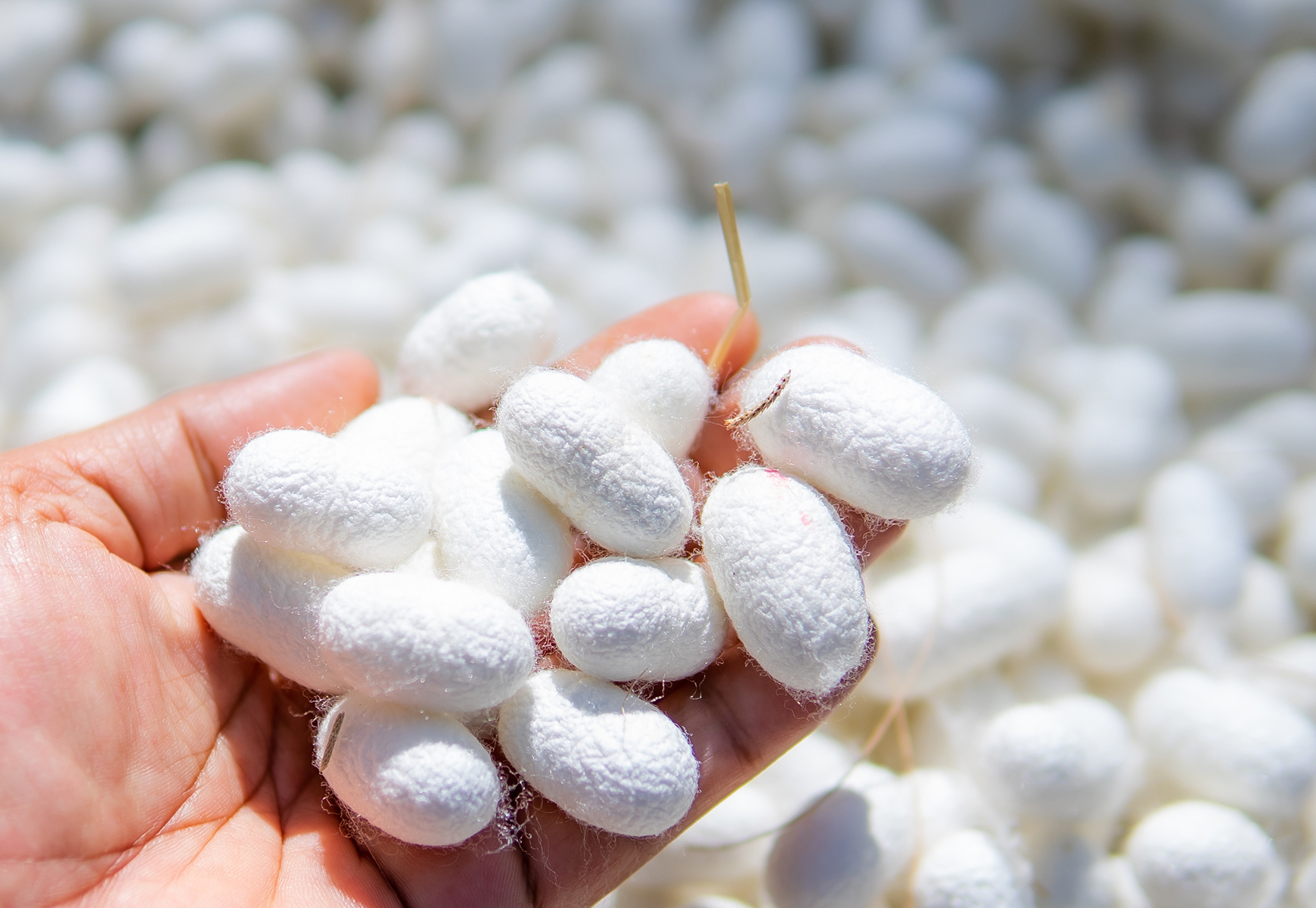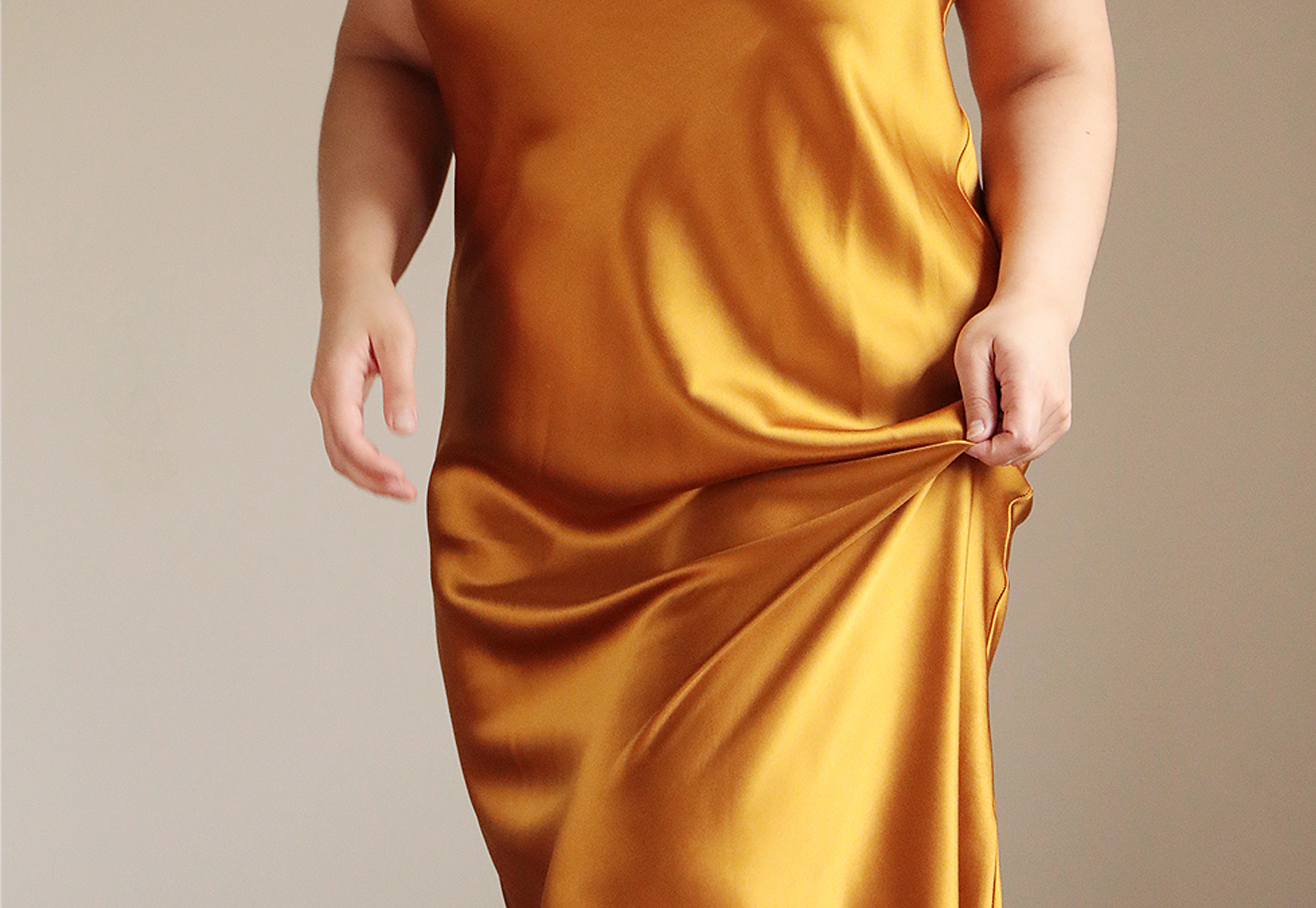Why silk is one of the most sustainable fabrics available?

From myths around Peace Silk to common misconceptions, our founder Lora addresses the issue of silk, animal welfare and sustainability.
Often, I get into conversations about how sustainable silk is. Obviously, it is one of the main materials used in our collections, so I frequently talk about the subject on social media. This topic always leads to a lot of opinions, with the dominant argument being that silk is not sustainable.
I’m completely aware where this notion is coming from because information on this fabric is quite scarce and very complex. However, it also appears to be tangled in several, very murky terms – ‘Peace Silk’, animal welfare and functionality.
I’ll try to address these elements in a simple and easily readable text without complicating the issue too much. This said, you should always approach material knowledge with a clear understanding of the complexities on the subject, such as supply chain implications. It is a difficult and complex subject that requires a certain level of education and tonnes of research, which most of the articles on the net simply don’t conduct.

There are few simple things you can read, but essentially silk is a natural protein fibre produced by the larvae of a moth called the Bombyx Mori. We have a very detailed article on the process of making silk which you can read here.
So, let me start with ‘Peace Silk’ and the concept behind it. And why it is not exactly what you thought it is.
Ahimsa silk is the original term, from Sanskrit ‘’Non-violence’’ (do no harm) and is a method of breeding and reeling silk fibres. This material and practice were invented by Kusuma Rajaiah about 20 years ago in India. Mr Rajaiah holds the patent and the trademark (via the Indian government) of Ahimsa silk, which has a unique creation process. In this process, the silk moth is not killed in order to produce the fibre but is left to finalise the natural cycle of breaking the pupa and emerging ‘’free’’ from it. Beautiful, isn’t it?
If you stop your research here, it’s very likely you will be absolutely convinced that the traditional silk makers are evil people killing silkworms and extracting their fibres.
What is missed in this discourse is the question “What happens to the silkworms after they emerge free?”. In other words, it begs the question; ‘’How ethical is leaving the blind and crippled silkworm (also domesticated for hundreds of years) to ‘’run free’’ after it emerges from the cocoon?

Let’s see. After hundreds of years of selective breeding, the Bombyx mori, also known as the domestic silkworm, has lost its ability to fly, see, camouflage, and fear predators. It is completely dependent on humans for its survival and no longer exists in the wild.
Wild silk does, however, exist and are cultivated from moths that live in the wild. There are varying types of wild silk depending on the type of moth, plants they eat, and regions in which they live. The silks produced do look quite different from the lustrous mulberry silks we are used to, and most of these materials are not as durable as traditional mulberry silk.
But let me go back to Peace Silk. So, the reasoning behind this concept is that essentially you are not hurting an animal, right? It’s a pain-free, harm-free process. But the Bombyx mori is an invertebrate from the family of lepidopteran and arthropod (moths and butterflies). And the truth is there is no firm data on whether the silk moths feel pain; actually, there is more evidence they don’t.
For those very interested in science like myself, you can read this research here.

Another very interesting fact which is often missed when someone addresses the Peace Silk subject is that in reality the Bombyx mori moth used in most commercial silk production barely survives after emerging from its cocoon. Like I said above, you might imagine these moths flying free, but this is not the case. After hundreds of years of selective breeding, these creatures are not bred to live beyond the cocoon stage and have lost the ability to fly, see, camouflage, and fear predators.
So, a Peace Silk moth will most likely live a short life in captivity during which it may get the opportunity to be used for breeding. Which brings me to my main question- how ethical is this really?
Furthermore, you should know that one of the main issues with Peace Silk is that due to the different process, the fibre itself is not as strong and easily breaks. Thus the material cannot compare in terms of functionality and durability to the mulberry version.
Another really important point I need to mention here is that currently there is no certification for Peace Silk. There is a trademark, and there is a patent, but a certification doesn’t exist. I’ll leave you to make further conclusions.
The second often discussed trait of this material is the functionality. On this topic, I’ve found so many statements to be untrue. I’ve heard ‘’silk is not durable and breaks easily’’, which Is quite interesting because the exact the opposite is true. Of all the natural fabrics used for clothing, silk is the strongest. Fibre to Fashion has even published a test here.
Fun fact: Parachutes and bulletproof vests are made from silk fibres.
 I’ve also heard ‘’silk is very difficult to care for’’ and there is definitely some truth in this, but let me tell you something - any natural fibre which you own, requires care especially If you want them to stay with you for longer. Silk is no different, and if you use mild detergents and take care of it properly, it will be the last garment in your wardrobe to say goodbye to.
I’ve also heard ‘’silk is very difficult to care for’’ and there is definitely some truth in this, but let me tell you something - any natural fibre which you own, requires care especially If you want them to stay with you for longer. Silk is no different, and if you use mild detergents and take care of it properly, it will be the last garment in your wardrobe to say goodbye to.
Another question I get is “Does it keep you warm?” or “Does it keep you cool?”. The truth is silk is a natural thermoregulation, and there is some amazing innovation happening in the past decade when it comes to the properties of this material. Prof Fiorenzo Omenneto is the leading scientist behind some of these innovations. He, just like me, believes that silk is the ancient material of the future.
His colleague Prof David Kaplan said about silk: “I’ve never seen or found or worked with any other material from nature that offers the versatility and range of properties that you can achieve with this remarkable family of proteins”.
In relation to that I would like to add a little conclusion: In most ways, silk is one of the least cruel fibres, as the silkworm is really the only species to ‘’suffer’’ (remember a domesticated lab breed of worm that cannot survive without humans) - unlike with cotton or synthetics, where entire ecosystems can be damaged.
